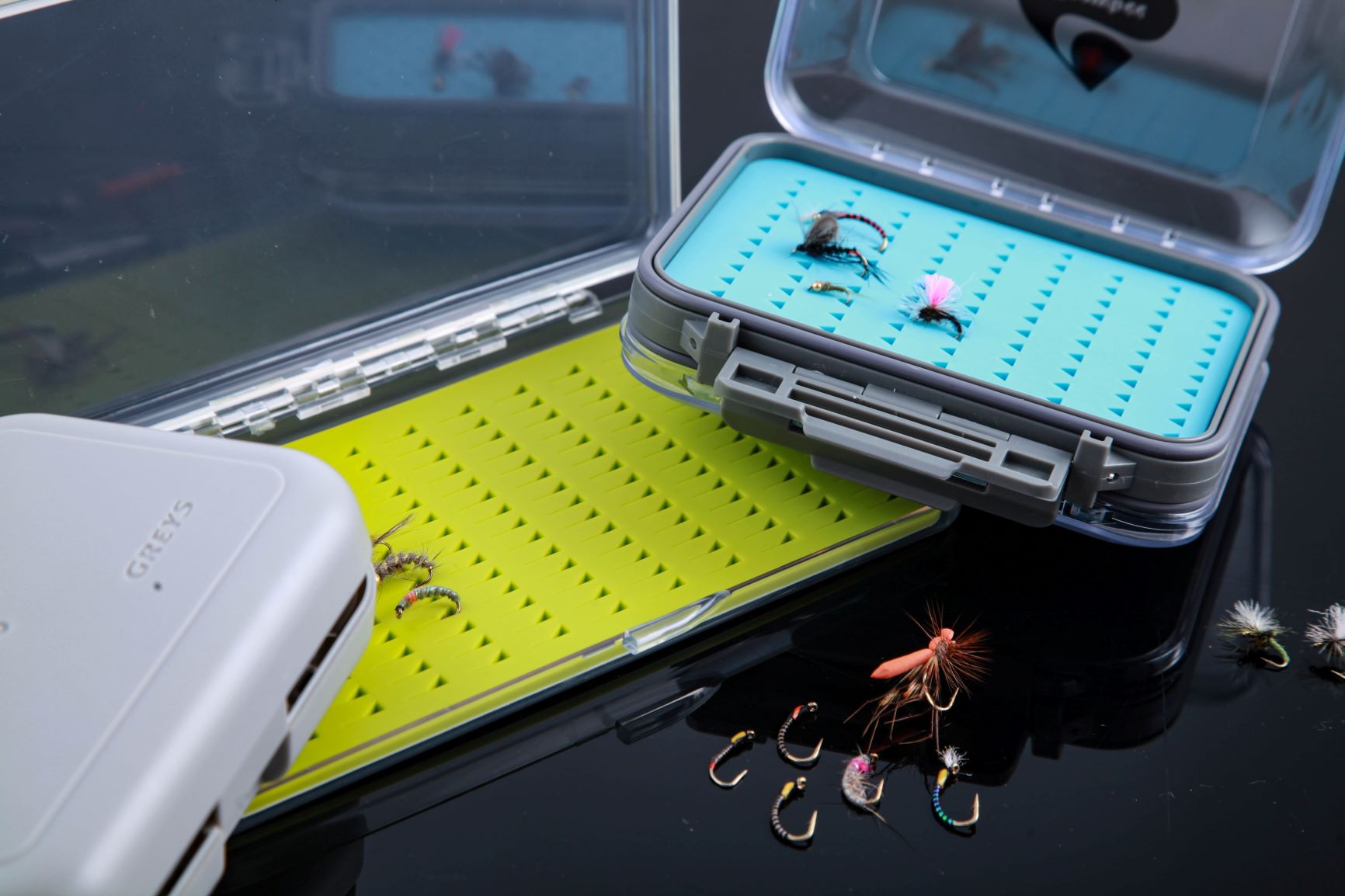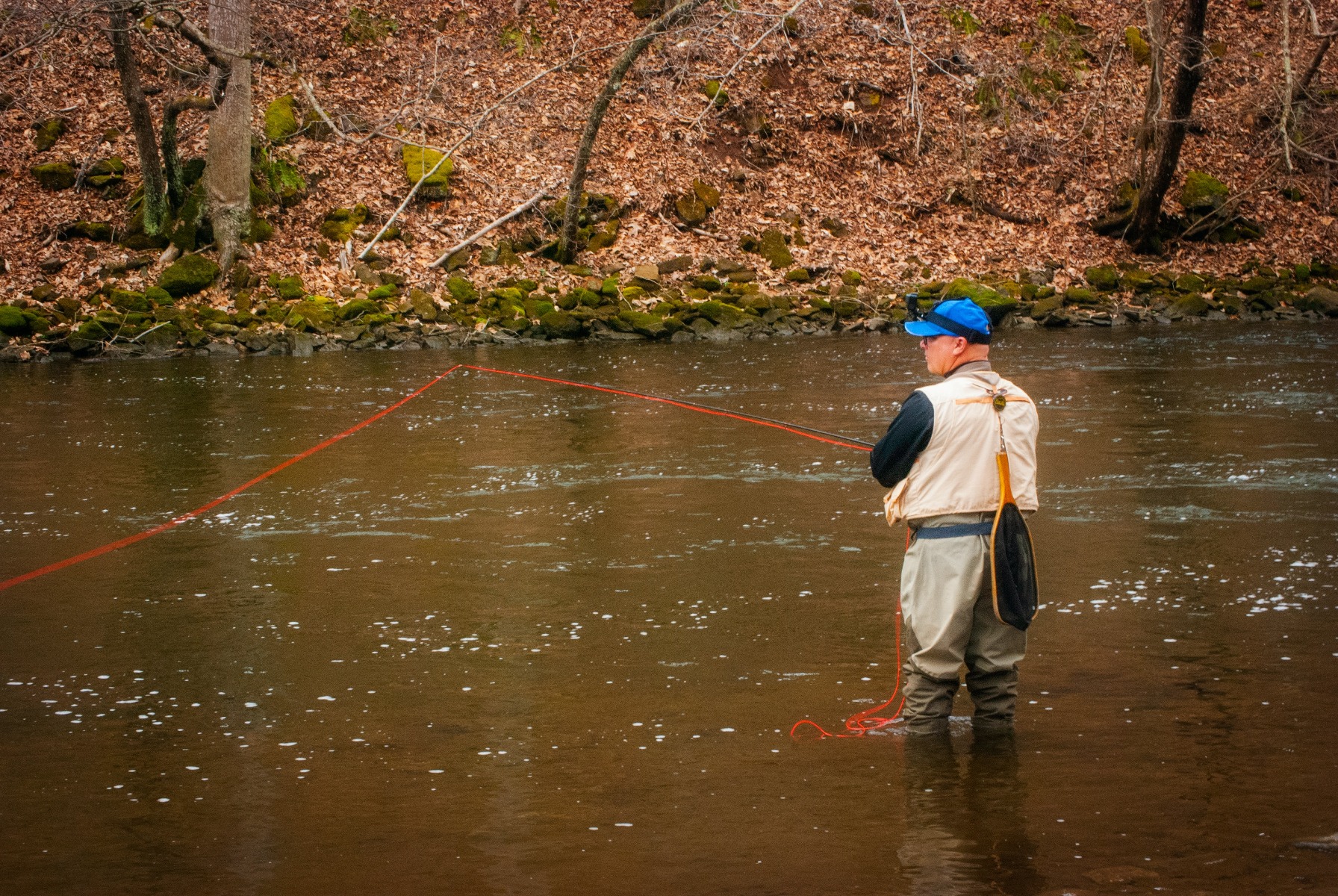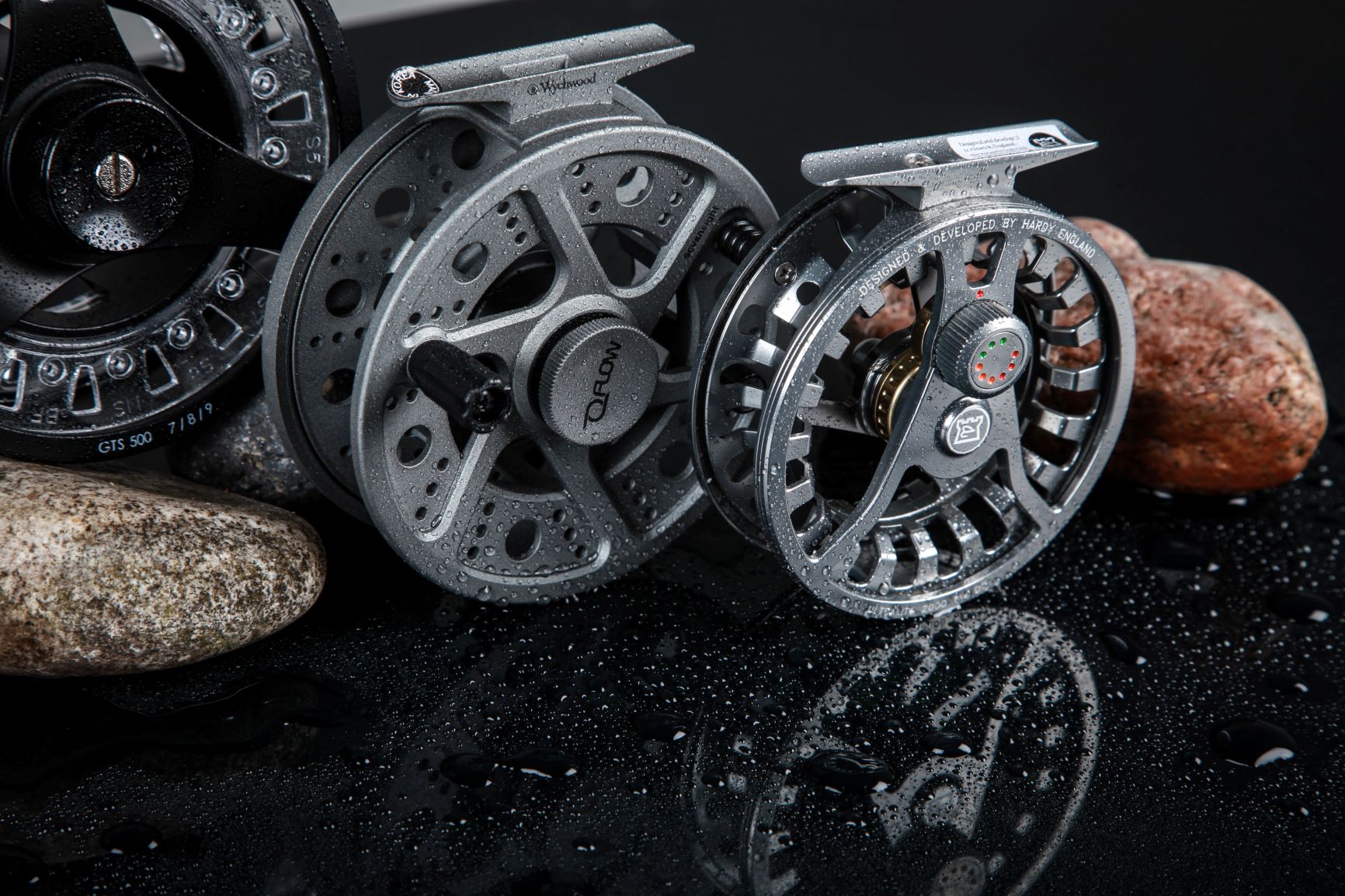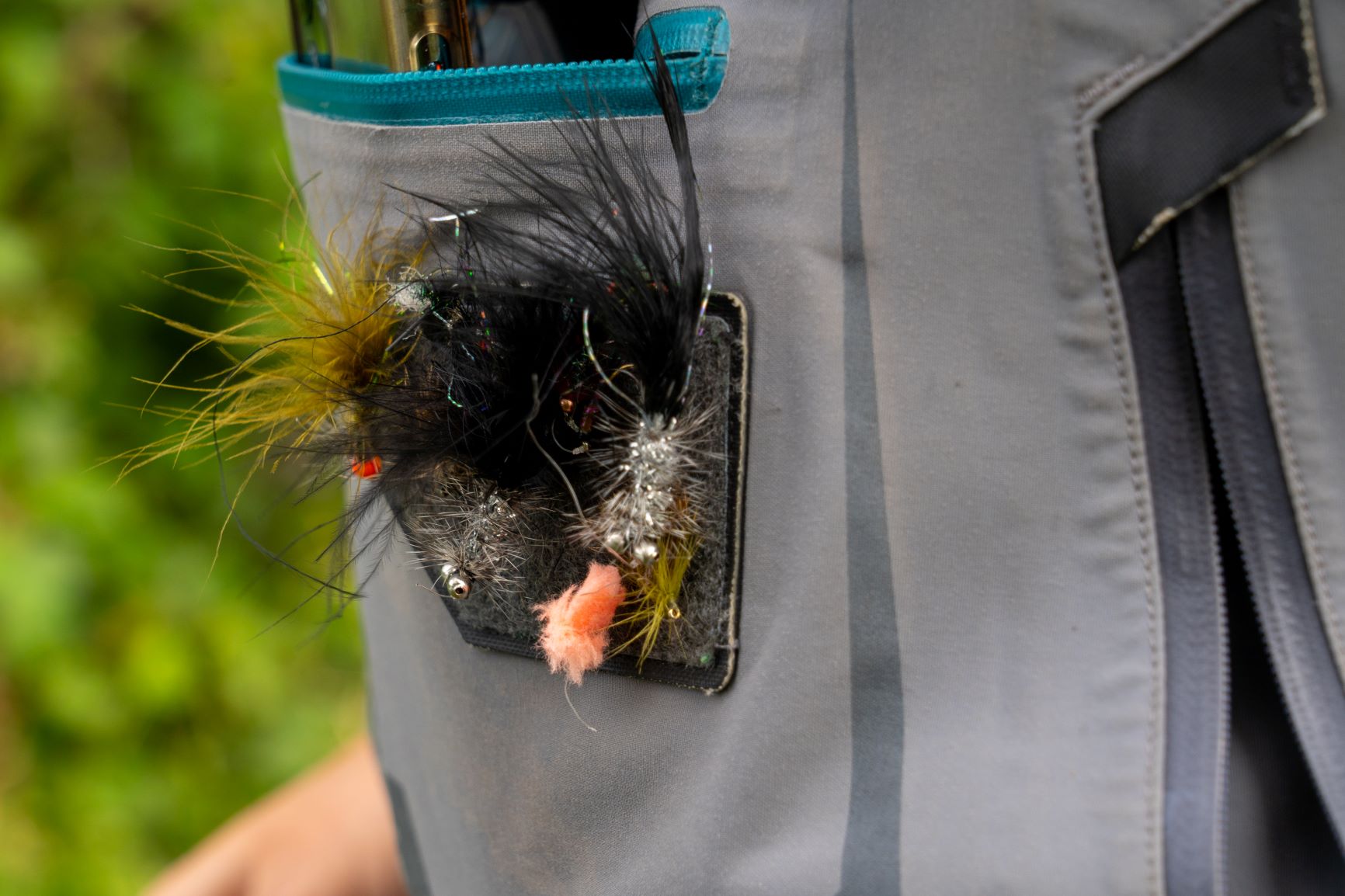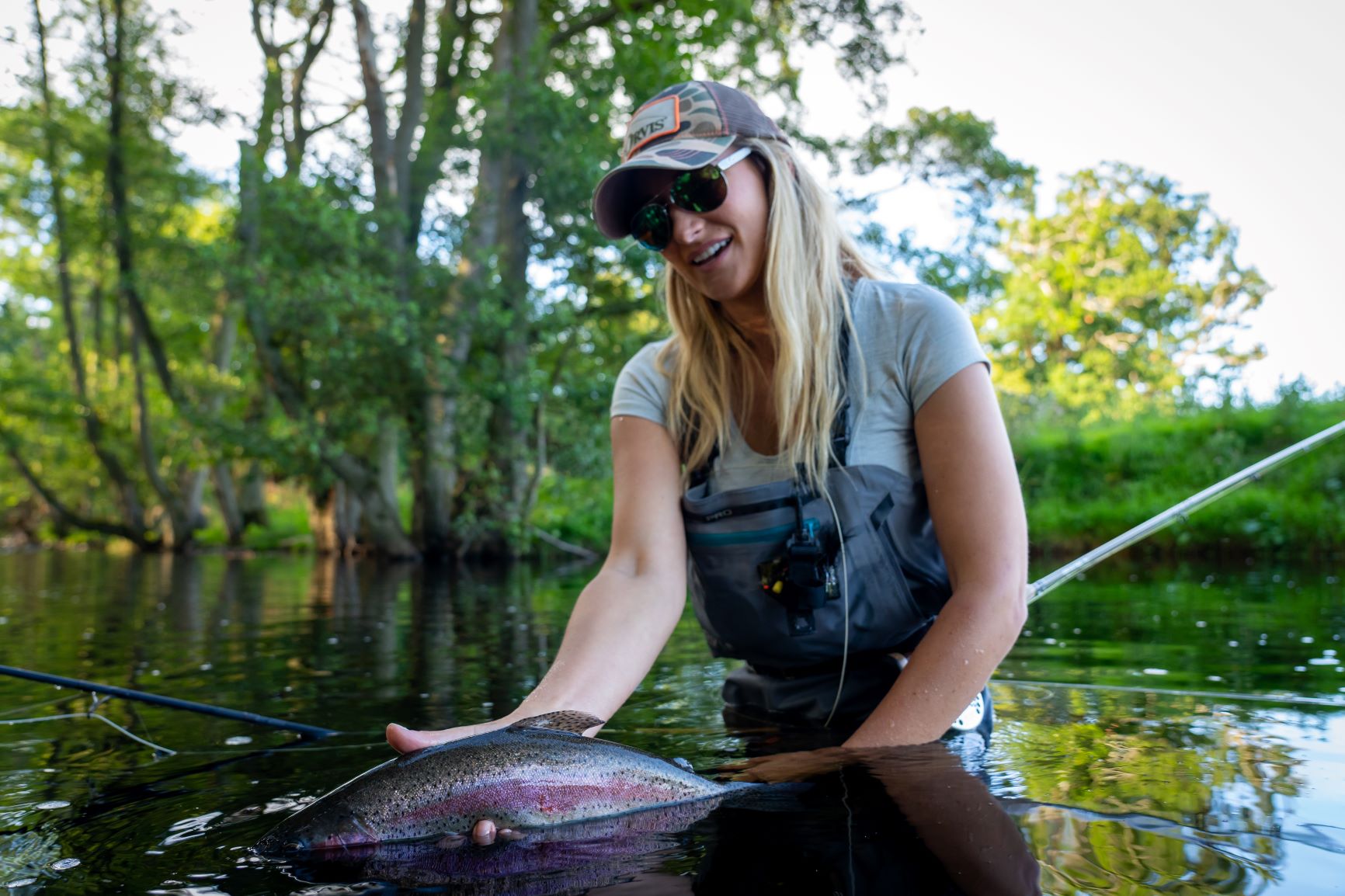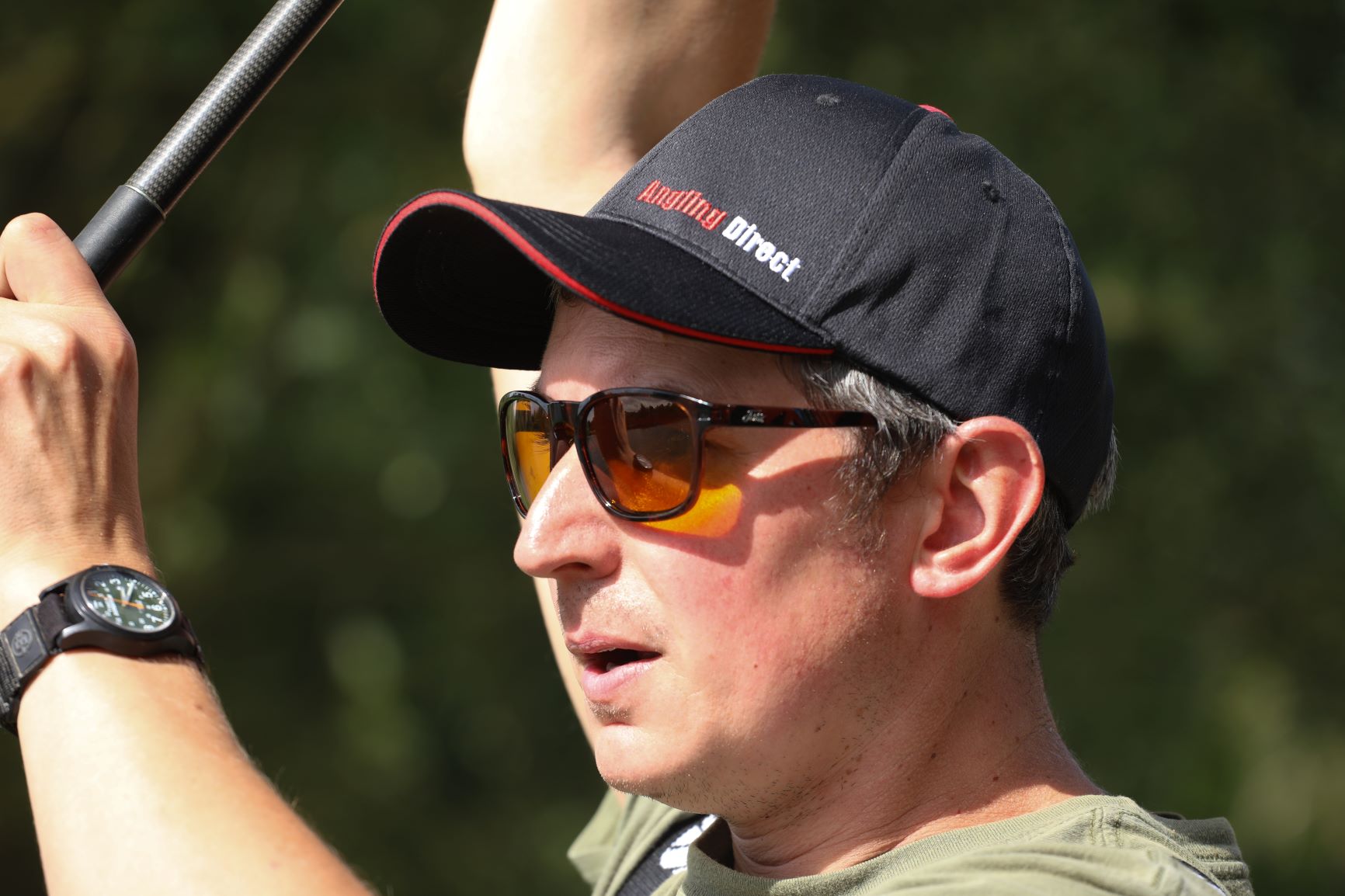Best Fly Fishing Gear Essentials
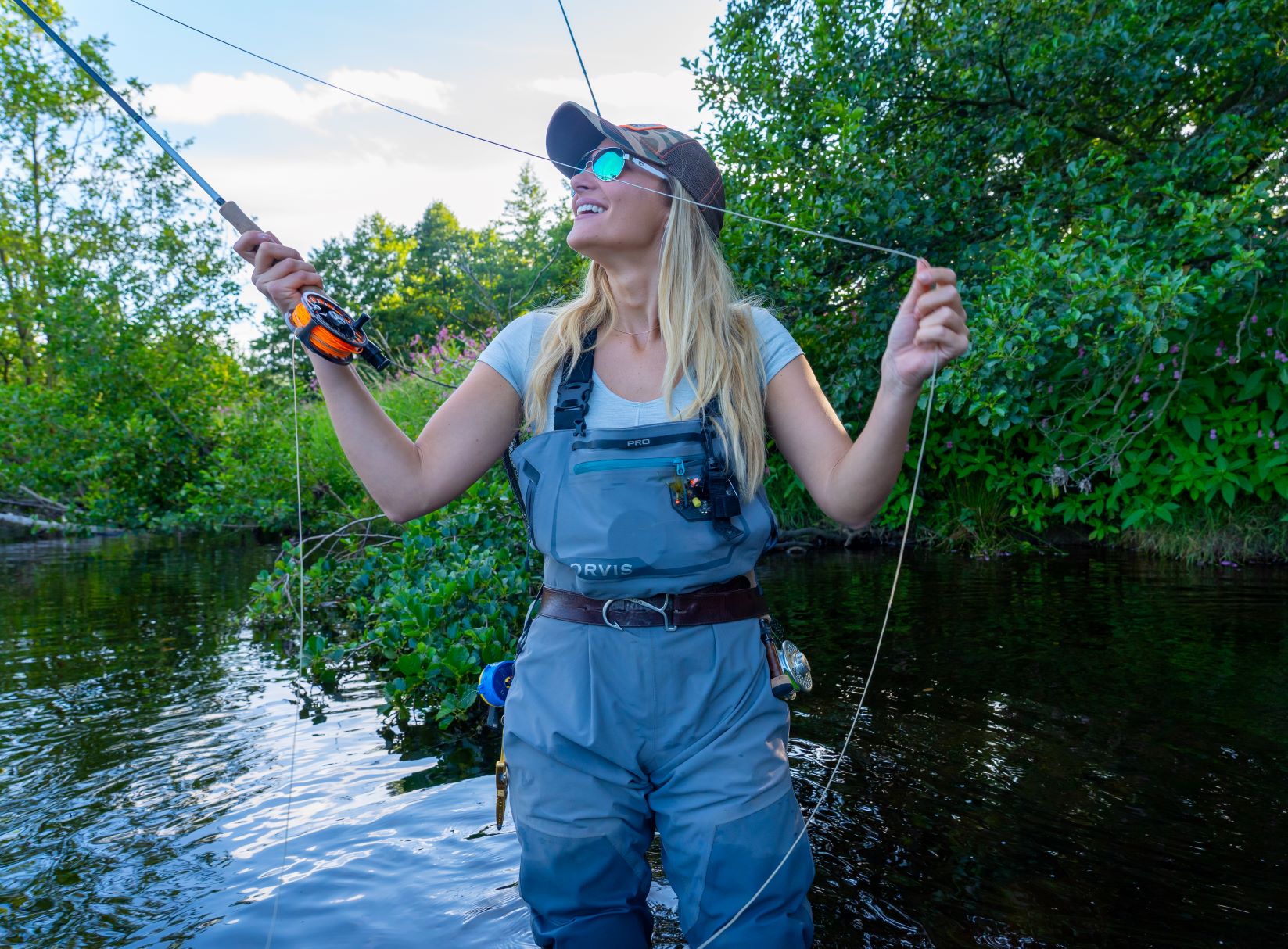
Fly fishing is one of the oldest of the angling disciplines and has been a part of angling history since the early Roman period. The sport has retained its popularity to this day for being different to conventional fishing. With most styles of angling, you cast the heavier lure or weight with the rod, and then the line follows but with fly angling, you cast a heavier line and the fly or ‘bait’ follows.
Types of Fly Fishing
Dry fly-fishing: A great option for beginners due to the visibility of the fly, dry fly-fishing entails using a buoyant fly to imitates aquatic insects, and primarily used to catch trout. With this type of fly angling, you try to keep the dry fly floating along naturally with the current.
Wet fly-fishing: Great for catching trout or warmer-water species, wet fly fishing requires you to cast a fly that sinks, aiming for the sinking fly to drift at the same pace
Streamer fly-fishing: Casting a fly/ lure that imitates a bait, to then retrieve through still waters. Streamer fly fishing can be used to catch trout, warm-water fish, and saltwater fish.
1. Fly Fishing Rods
The right fly fishing rod should feel like the extension of an arm to any fly angler, and we aim to only provide you with the best fly rod in the business. We, here at Angling Direct have a vast range of fly rods for sale. We have a selection of fly fishing fanatics among our number, and as such, all the products we stock have been hand chosen by experts to ensure their quality and performance pedigree to benefit either fly fishing for beginners in the UK or the more advanced of the discipline.
What is the best fly rod for a beginner?
Newcomers to fly fishing often find that slow or moderate action rods, help them hone their casting technique because they provide better control over shorter distances. Once casting confidence and ability increases, anglers often find that they want to cast further and not be hampered by the wind. Moderate-to-fast action rods are not as affected by wind as slower rods and are flexible enough to accommodate switching tactics, such as moving from using dry flies to nymphs.
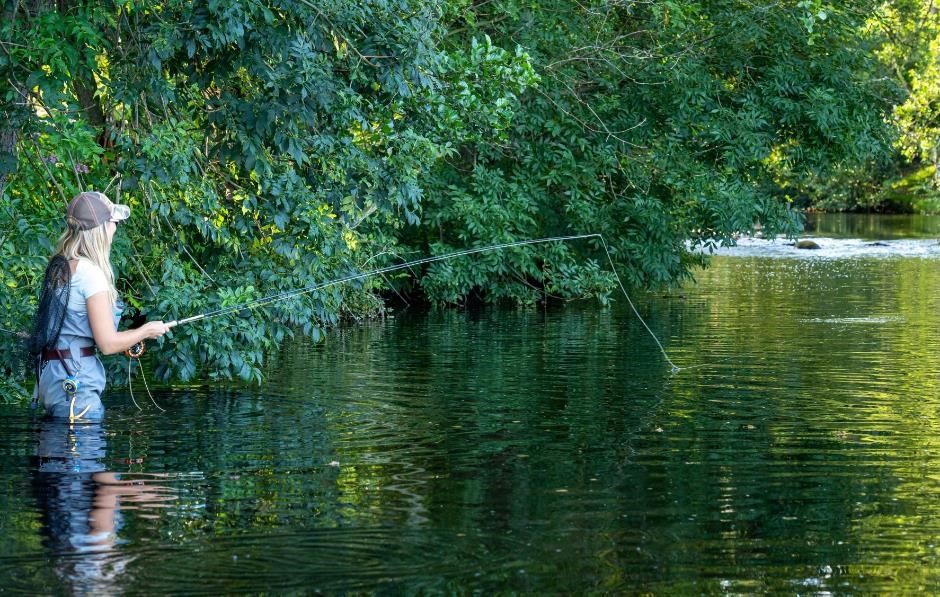
Types of Fly Fishing rods:
Double-handed rods: These are great for salmon fishing as the extra handle space gives you room to confidently hold the rod with both hands and support the rod more.
Single-handed rods: Tend to be used for trout and saltwater fishing.
View all Fly Fishing Rods Here.
What size fly fishing rod do I need?
Your choice of rod length will vary depending on the species of fish you are targeting. Fly Rod Lengths usually reach no more than 9ft. If you need to make longer casts due to a heavy fly line and fishing in windy conditions, pick a 9ft rod. For a fly rod suited to a variety of elements and conditions, select the all-around fly rod length of 8.5ft. Go for a shorter rod of 8ft or under if you need a fly rod for short casts on a small stream with a light fly line.
5 - 8ft Rod: |
Ideal for fishing on small streams, casting small flies on light lines. A 3oz casting weight helps makes a little splash when landing so you do not disturb those fish. |
9 - 10ft Rod: |
This size suit fishing larger rivers or small stillwaters. |
9 – 10ft 6": |
Best for large stillwaters or fly fishing from a boat. |
10 / 11 ft: |
Paired with a 3 to 5 weight, this size suits nymphing flies. |
What makes a good fly fishing rod?
The ideal rod for fly fishing will be designed for controlled speed and responsive strength as you are likely to need a strong rod for long, silent stalks associated with fly fishing.
Power and accuracy: This in combination with some great fly casting skills helps your chosen fly and fly fishing line to be presented without spooking the fish you wish to land.
Lightweight: Look for a fly fishing rod made with graphite or high modulus carbon blank as these help with a progressive action which allows for both the element of surprise that comes from subtle strikes and the power needed to play in lively, hard-fighting fish.
Twisting Blanks: Some carbon fibre blanks are rated as having a high intermediate modulus, or measure of resistance to twisting. Purchasing a fly rod with twisting blanks divert energy during the cast for accuracy and power.
Four-piece construction: These are easy to break down and transport wherever you want to go. Telescopic and travel rods are ideal for the angler on the move as well as looking at fly rods with hook keeps to make moving up a peg a lot easier.
Reel seat: Fly fishing reels tend to be large in size so make sure you get one that matches up to your chosen fly fishing reel.
Handle: Many rods today use EVA material on their handles but when it comes to selecting a fly rod, you are more than likely going to want a cork handle. Cork grips are incredibly light and having them on fly rods help control and direct the fly fishing rod whilst casting, retrieving, and playing the fish. The right cork handle for your fly rod can offer a more comfortable day of fly fishing without your hands and arms aching with fatigue by the end of the day.
Butt caps: Can be made of a couple of materials, but consider which one your chosen rod has as its weight can affect the balance of the whole rod which is vital to fly fishing techniques.
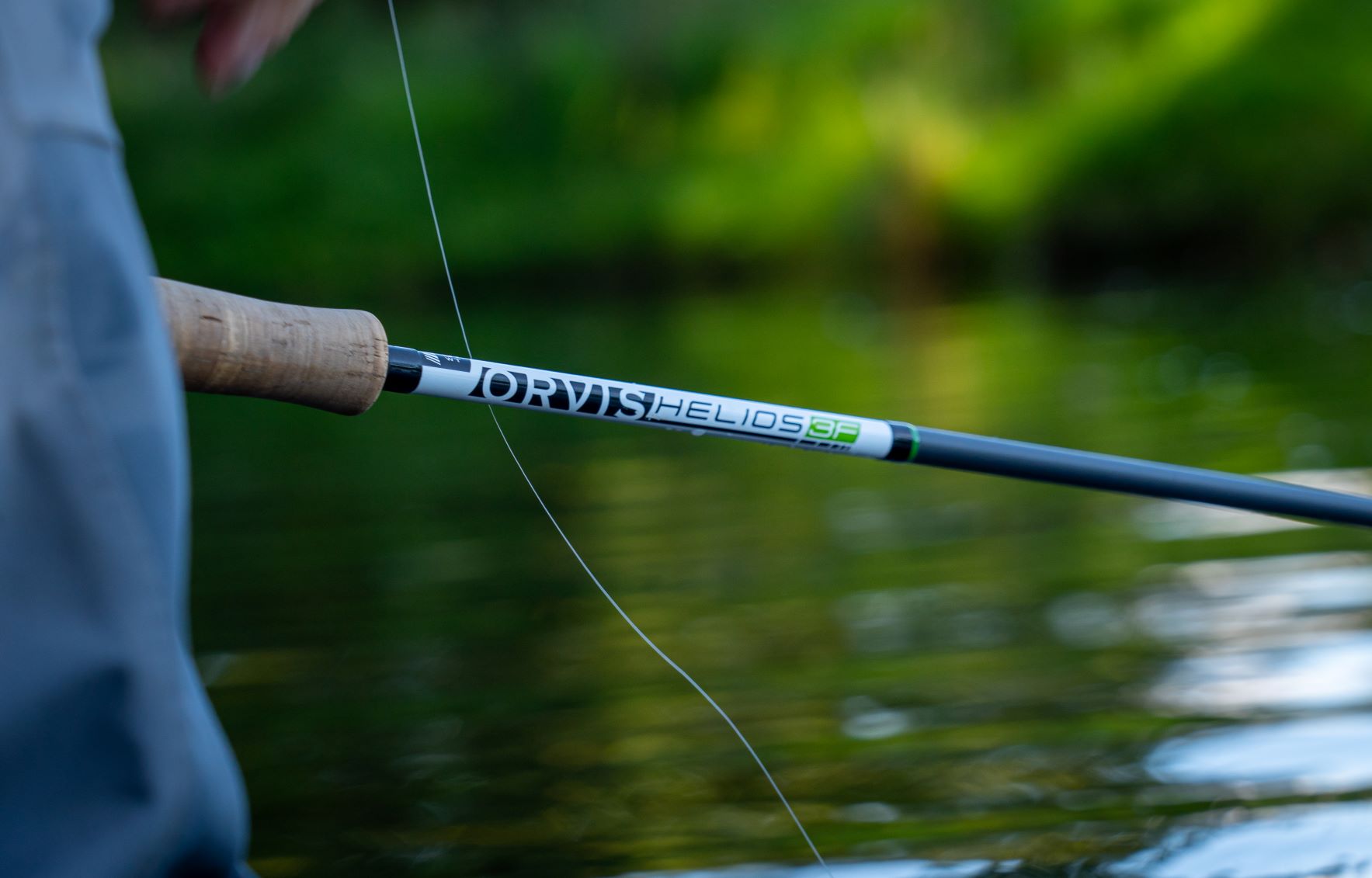
What weight fly rod should I use for trout?
The weight of the fly rod or what weight fly line you plan on using when fishing for trout would generally be a 4-weight, 5-weight or 6-weight rod, with five being the most versatile. If you are an angler looking to land a different species of trout ranging from stillwater rainbow trout to brook trout stocked in a reservoir, we have a range of trout fishing tackle to aid you in your adventures. The different species and destinations of trout demand different trout fishing equipment and flies that will land you a great fish, whether it be an eight weight fly rod with a ghost tip fly line or boat fishing using a competition drogue to stop your drift, it is covered.
Fly Fishing Rod Brands
With names such as Hardy's, Greys, Daiwa, Shakespeare and Snowbee in the Angling Direct catalogue of fly fishing rods, you needn't worry as the rods produces by these brands are worthy of any fly angler.
2. Fly Fishing Reels
Fly reels truly are a vital bit of gear, and a good fly fishing reel can make all the difference between a pleasurable and a disappointing session.
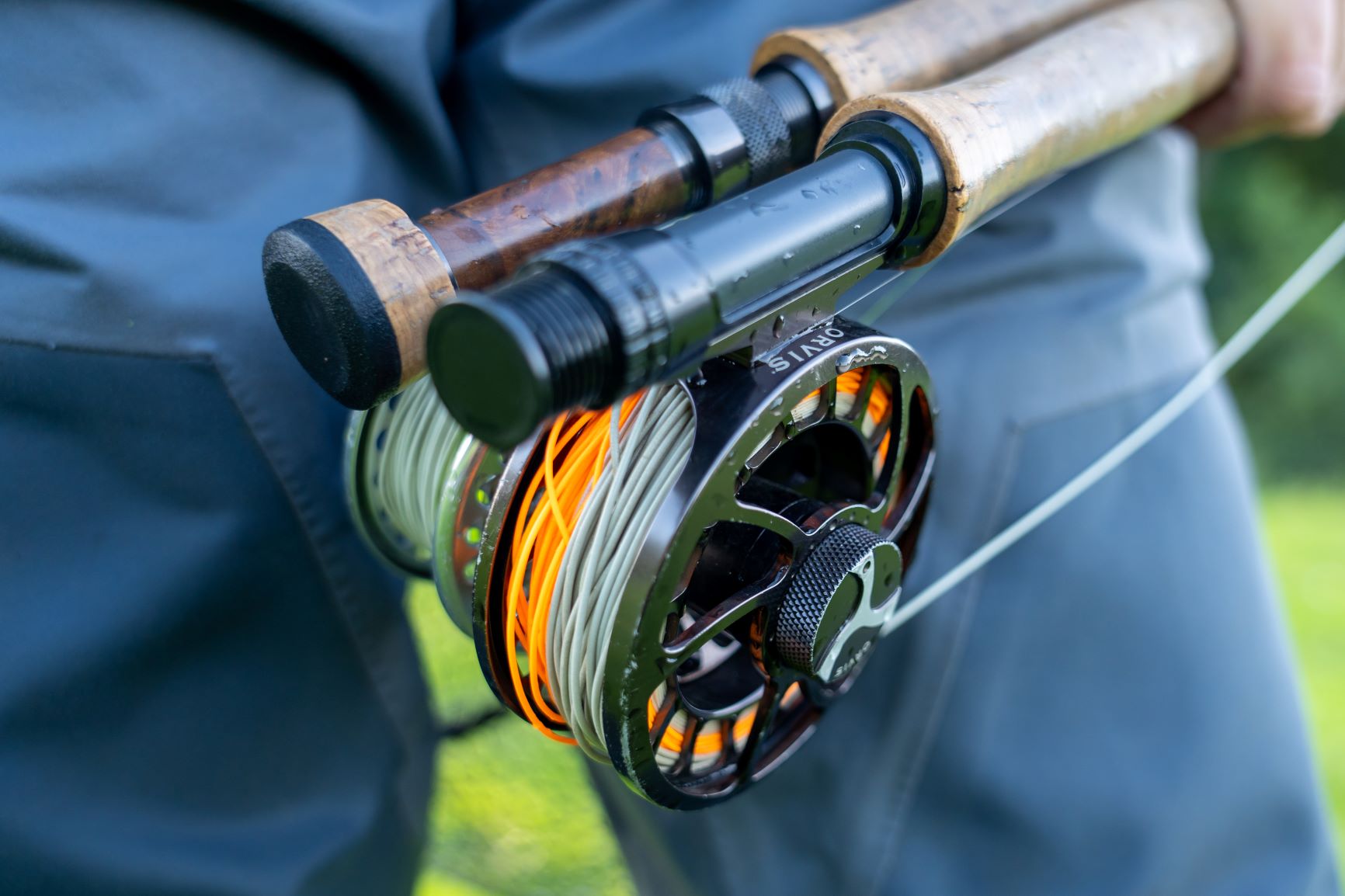
Types of fly fishing reels:
Whether you need fly fishing reels for trout, chub or catching roach, there are two main types of fly fishing reels to consider.
Centrepin reels: These rotate around a centre pin or spindle, offering a lightweight setup that gives an incredibly smooth performance. Most centrepin reels operate on a zero-drag system, meaning that the angler has full control over the speed of their spool, usually controlled by the angler’s thumb. Centrepin reels are classified based on the diameter of their spool, which is usually written in terms of inches. Another of the benefits of fishing with a centrepin is its exceptionally low maintenance.
Drag reels: Similar in appearance to centrepin reels but equipped with a drag system, which not only prevents the spool overrun but also aids the angler when trying to reel in a hard fighting fish. These reels often operate on cassette systems and come supplied with multiple spools to allow you to spool up with multiple line types, picking the precise line that you need for the conditions on the bank.
Things to Consider when Buying a Fly Fishing Reel
Material and Reel Frame: Fly and centrepin reels will often use aero-grade aluminium rather than a carbon-based material but most fly reels are either made of lightweight plastic, impact-resistant die-cast aluminium or machined aluminium, which offers the highest level of durability for fly anglers.
Arbour: This refers to the size of the spool and the amount of line it can hold. A large arbour spool can help you cast further but it is also an asset when retrieving.
Drag System: Otherwise known as the brake system of the reel, there are a couple of drag types to consider including Click and pawl/ Click Drag (a mechanical system with very little power but lightweight and unlikely to fail), Disc drag system (which involves two or more discs for friction and come as open or sealed, both are ideal for chasing hard-fighting fish.
Brands of Fly Fishing Reels
With brands like Wychwood, Greys, and Hardy making up the numbers in our catalogue, you can also find AD’s centrepin reels, especially for fly fishing within the Advanta range. We’ve carefully designed our centrepin reels with some of the best fly anglers in our team to create a product that not only looks good but performs like a dream, too.
3. Fly Fishing Line
Fly lines, mainlines and fly fishing leaders are an exact science. Water conditions are key to which fly line you choose. Many anglers can spend lots of time working out which fishing line they need on the day, tossing between a line that gives only a delicate impact on the water to one that can handle a larger and stronger fish.
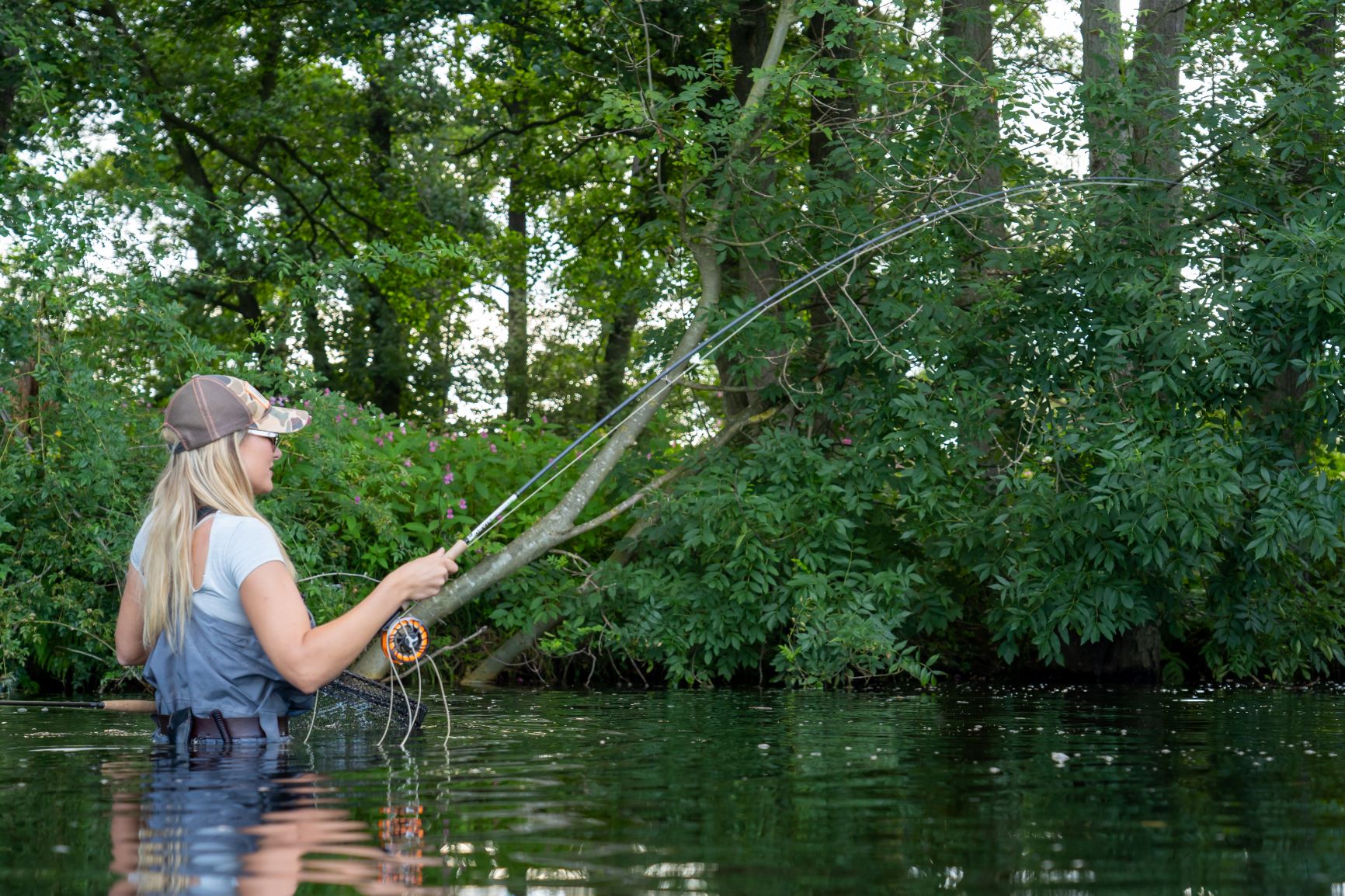
When you are fly fishing, there is no weight on the end of the line, just an incredibly lightweight fly. This makes distance casting difficult as the weight will always come from the line itself. This is where the linebacking, leader and tippet come in.
Fly Backing: The longest portion of the line, the backing is used to fill up the reel and provide extra length for a longer fish run. It is often thick and brightly coloured to make it easy to see on the water.
Line Leader: Used to transition from the thick fly line to the thin Tippet, to keep the heavier fly line from "slapping" onto the water, and scaring the fish.
Line Tippet: This attaches to the fly on one end and the leader on the other. It is nearly invisible to help trick fish when presenting the fly.
What are the different types of fly line?
If you select the wrong type of line, you will have significant difficulty casting and you may also chase away all the fish in the process of getting your fly out to your chosen spot. Types of fly fishing line can be split into their densities. A fly line density comes in three options; floating, sinking or sink-tip.
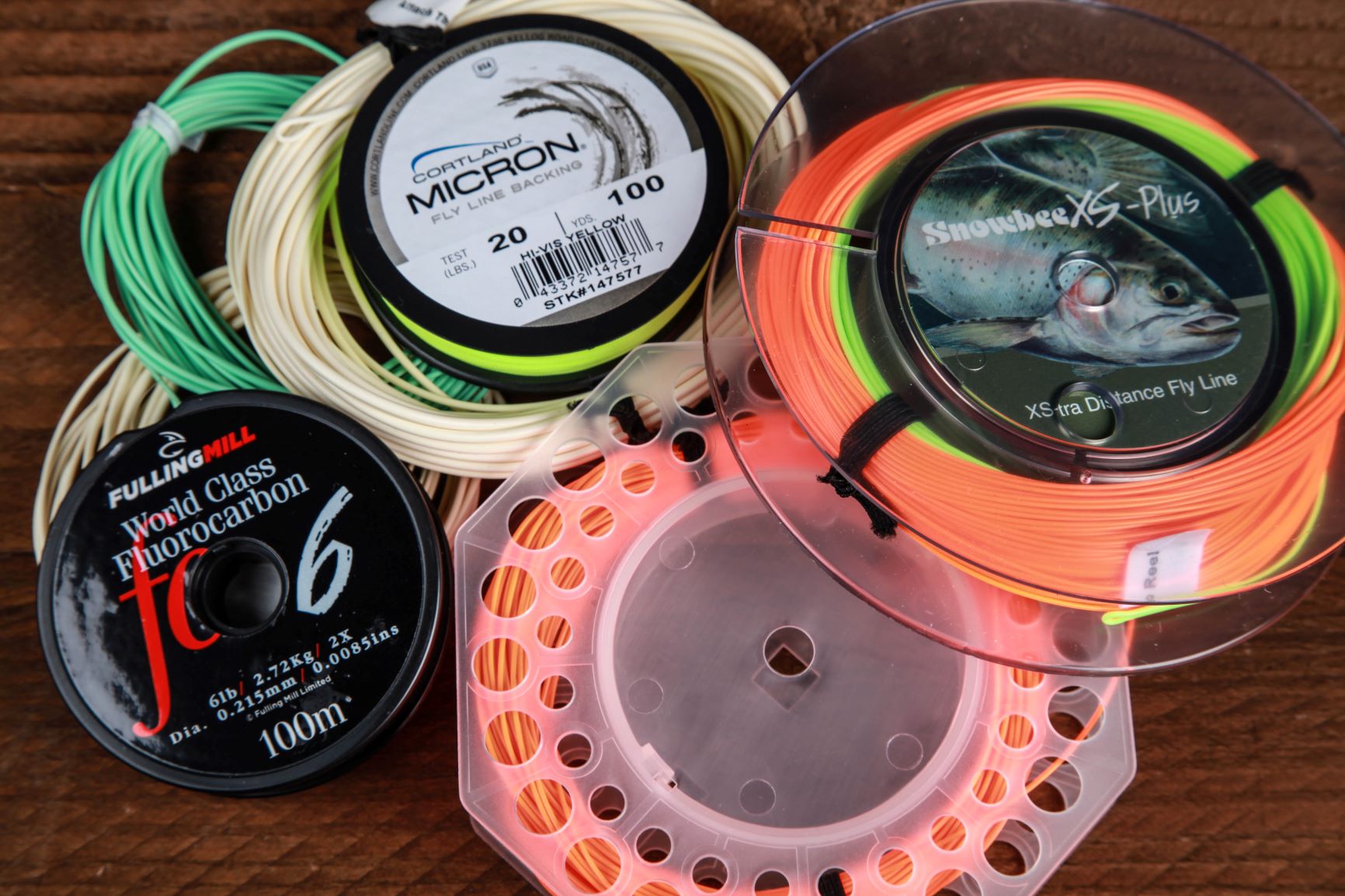
Floating: A floating line for fly fishing is incredibly popular and versatile. Often used for trout fishing, a floating fly line does not sink unless you add weight to the line with a lead. Adding weight will make a floating line into a sink tip so this is an ideal choice for beginner fly anglers.
Full sinking line: As the name suggests, this line type sinks, helping to attract fish deeper into the water. Sinking fly lines are great for big water fishing, particularly lakes and saltwater but have limited utility in an average river. You can check how fast your fly line will sink by the sink rate. Some lines will sink quicker than offers so this is worth checking. Nonetheless, the whole line will sink at the same time and is measured in fps, feet per second.
Sink-tip: Otherwise known as partially sinking lines, the sink tip type of fly line are usually used for just trout fishing as floating lines even with added weight cannot always reach your designed spot or pull-down nymphs into the depths of the river quick enough. That is why this hybrid of the sinking and the floating line was designed. It gets its name sink tip because usually, the first 10 to 30 feet of the fly line sinks whilst the remainder of the line floats. This line allows for the fishing of nymphs and streamers in the depths of rivers where the current is moderately fast.
Features to consider when purchasing a fly line
All the lines we stock come in a variety of weights, lengths, and colours. In this way, you can pick the line (or lines) that suit your needs, so when you’re at the bank deciding which line would be best you’ve got a full selection to choose from. Before you start choosing there are just a few features to look out for that may help pick the best line for you.
Fly Line Taper: This refers to changes made to the fly line itself to assist with casting. These differ but the most common ones are;
Weight-Forward Taper (WF) |
A fly line that has added weight and thickness in the first 10 yards of the fly line and the remainder of the fly line is uniform in thickness and weight. |
Double Taper (DT) |
Not suited to long casts or windy days but offers a fly line that gradually widens in diameter, helping with casting. For an affordable option, you can pick a level taper fly line that has the exact same width and weight throughout its entire length but this tends to be harder to cast. |
Shooting-Taper (ST) |
A faster, better version of the WF taper. The first 20 feet of the fly line is heavily weighted whilst the remaining fly line is then of uniform width and weight. This line is very narrow and is great for tournament casting where you need to cast as far as possible. |
Colour: The colour of the fly line does not overly matter in the sense of scaring fish due to the daytime light conditions casting a shadow as you are topwater fishing. With this in mind, pick a fly line that is just easiest for you to see, whether it's orange, yellow, pink, etc. Nightime or submerged fly fishing is a different story. Generally, you want to pick a fly line darker in colour such as brown/black shades.
Weight: Always remember that the fly lines weight is what allows the angler to cast the fly - not the weight of lure like in spin fishing. The weight of the fly line is measured in grains and is usually given a number between 1-14 by manufacturers that are then displayed on the packaging. The weight of your line varies depending on what fish you are targeting which we will cover shortly.
Balance is vital: It is a good fly fishing practice to make sure to match everything up exactly as this will certainly improve your fishing experience - especially for a beginner. Follow this simple formula of Fly Line Weight = Fly Rod Weight = Fly Reel Weight. For example, if you are going to use a 5-weight fly line, pair it with a 5-weight fly rod and 5-weight fly reel.
What do fly line numbers mean?
As daunting as the numbers on a fly line box maybe, we, here at Angling Direct can help break it down for you.
Fly Line Weight 1-3: |
Ideal for smaller fish such as panfish, very small trout or fishing for larger trout in tiny streams. |
Fly Line Weight 4: |
Great for panfish, but mainly for the largest of trout. This weight fly line is best used on small or middle-sized streams, where your longer casts are not needed. |
Fly Line Weight 5: |
The ideal, all-rounder line for trout fishing. This line weight covers a multitude of trout fishing situations. Although it will work for catching smaller fish, it will not be as fun to use as a light line. This line will also work well in catching small bass or species in rivers. |
Fly Line Weight 6: |
Another versatile line weight that is again ideal for trout fishing but forgets catching smaller trout and panfish with this line. This weight is much more suited for large trout and the largest of bass. |
Fly Line Weight 7: |
This weight is not for trout river fishing but instead suited to larger, more powerful fish such as bass, smaller salmon, and steelhead. |
Fly Line Weight 8+: |
Fly line weighted from 8 or more are built for catching very powerful, very large fish, such as saltwater and salmon species. A freshwater fly angler will not have much use for a line weighted above 8. |
Understanding Fly Line Codes
In addition to getting your head around taper abbreviations and line weights, a fly angler needs to familiarise themselves with what the codes on a fly line box mean.
-
The code is a formula of line taper, followed by line weight and then line density (float, sink or partially sink).
-
The taper of the fly line is always first in the code and will be either DT, WF, L or ST.
-
This is followed by the line weight which will be a number between 1 to 14.
-
Finally, the code ends with the density of the fly line which is measured in the letters S, F, F/S or in some cases I.
Beginner fly anglers will benefit from knowing what the series of letters and numbers mean so we will break it down for you with some examples.
WF-4-F: The WF in the code simply means weight-forward taper. The number 4 represents a line weight of four means and the final F in the code tells you that this line floats.
WF-7-S: Similar to the code above, this code stands for weight forwards, line weight of seven but ends with an S instead of F. S here simply means the line will sink. You can then look for more details on the product description or packaging to find the sink rate of the line.
DT-2-F/S: When a code starts with DT, this means the fly line has a double taper.,The number 2 means a line weight of 2 and the end letters F/S represents the density of partially float and sink, otherwise known as the sink tip. Again, the sinking rate can be found in its product description or on its packaging.
L-5-I: A code starting with L means it boasts a level taper. Again, the number, 5 tells you the line weight is five and the ending letter is I. I means the line offers an immediate sink and its rating will be found on its box.
ST-6-F: ST in a code means it's a shooting taper fly line. The weight on this code is six and the ending letter of F notifies you that the line floats.

What is the best fly line for beginners?
Those new to fly angling are well suited to picking a fly line with a weight forward (WF) taper. Picking a floating fly line will make trout fishing easier but a sink-tip line may help when bass or deep nymph fishing. If you are not sure if fly fishing will be for you, instead of purchasing a second line, look at our terminal tackle section for some weights that you can add to your floating line when needing the tip to sink.
View all Fly Fishing Lines here.
Brands of Fly Fishing Lines
We offer lines from the top brands in the business, and stock Wychwood, Leeda, Fulling Mill, Greys, and Snowbee, Airflo fly lines, to name just a few of our excellent suppliers. Whether you need fly lines for trout, carp or pike, we have a range of fly lines to suit the fish, so check out our fly lines for sale.
How long does the fly line last?
Like any piece of tackle in your fishing armoury, the life of your fly fishing line depends on how you look after it. Too much sun, a grim and dirt build-up or poor storage and use will all degrade a fly line quicker. If your fly line is looked well after it should last roughly 250 ‘use days’ or in fly fishing terms this will cover a season or two. For the occasional fly angler, a well-maintained fly line might last you ten years!
How often should I clean my fly line?
If you invest plenty of money into your fly line, you may want to clean it after every use to ensure it lasts for many sessions to come. Cleaning your line regularly and properly will mean you do not have to replace your fly line over and over and cause serious damage to your wallet.
You just need to get some liquid soap, a couple of buckets of warm water and some clothes to get your cleaning started. Placing your dirty fly line in a bucket of warm soapy water whilst running a cloth from one end of the line to the other will help get it shiny in no time!
Remember to then remove the soapy water by rinsing the line in clean water without soap and then dry the line with a dry cloth. Your line should be removed from its reel before this cleaning process.
4. Fly Fishing Flies & Lures
Flies are an integral aspect of fly fishing, in much the same way that bait is an integral part of carp or coarse fishing. Without flies, an angler would just be dropping their line in the water and praying that a fish comes along and likes the look of their hook.
What is the Best Type of Fly for Fly Fishing?
Different types of flies depending on the time of year you are fly fishing. This is due to the typical flies and age of fly around during the time you fish and therefore picking flies that are more likely to be around with not raise suspicion from fish.
You should aim to have a selection of:
1. Surface flies: Designed to float on the surface, these flies mayfly imitation, daddy long legs imitation, and a sedge fly.
2. Buzzers, Nymphs & Emerging Patterns: These flies are for fish under the surface eating hatching flies.
3. Bright Attractor Flies: These flies aim to attract fish into eating them, but don’t imitate anything natural... such as an orange blob!
Try to stick to these popular patterns and you won’t go wrong. As with every type of fishing, the bigger the selection, the harder the choice.
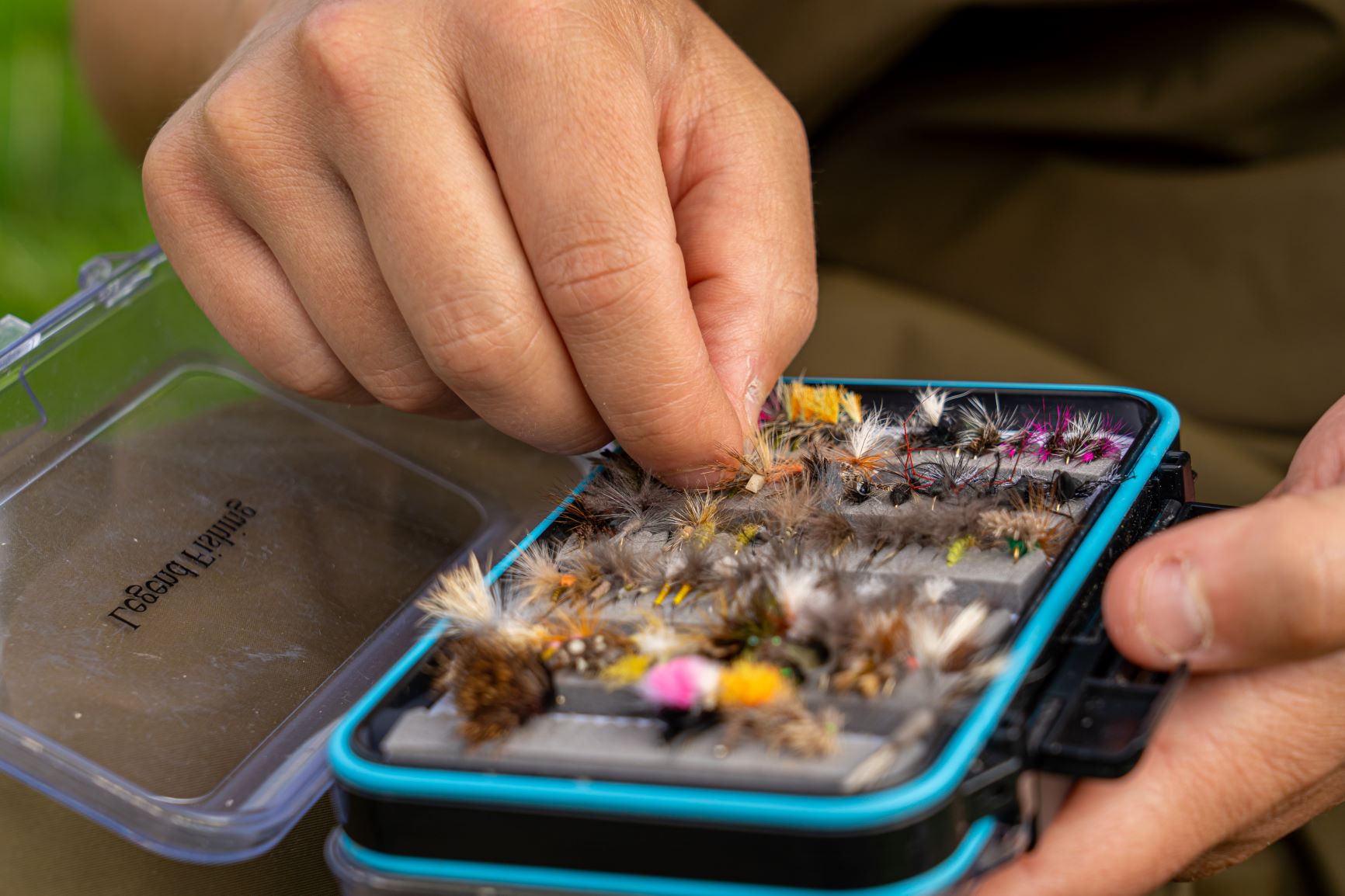
Some make their own flies but you can purchase pre-made from our online store and in the AD shops. Angling Direct stocks a range of flies from two of the industry’s fly fishing experts.
View all Flies here.
Brands of Flies for fly fishing
Fulling Mill supply an excellent range of trout and salmon flies, all of which have been expertly designed to keenly match the prey of their target fish. Designed with the help of consultant fly angler Ronald Sutherland, who has been fly fishing for almost 40 years, Fulling Mill’s salmon flies are world-class.
Daiwa is a brand that has also developed its range of flies with cast master Hywel Morgan. This ensures that the entire range of Daiwa’s fly fishing flies is of the utmost quality, with exceptional tying standards throughout the range.

5. Fly Fishing Nets
For many hoping to catch a trout or salmon, we have sorted the best fly fishing nets on the market that is not going to drain your bank balance.
Do I need a net for fly fishing?
A premier quality net is without a shadow of a doubt one of the most important pieces of tackle that you can own. Not only is a net the only safe way you can transport your fish from the water to the bank, but owning a good quality net is a vital aspect of fish care.
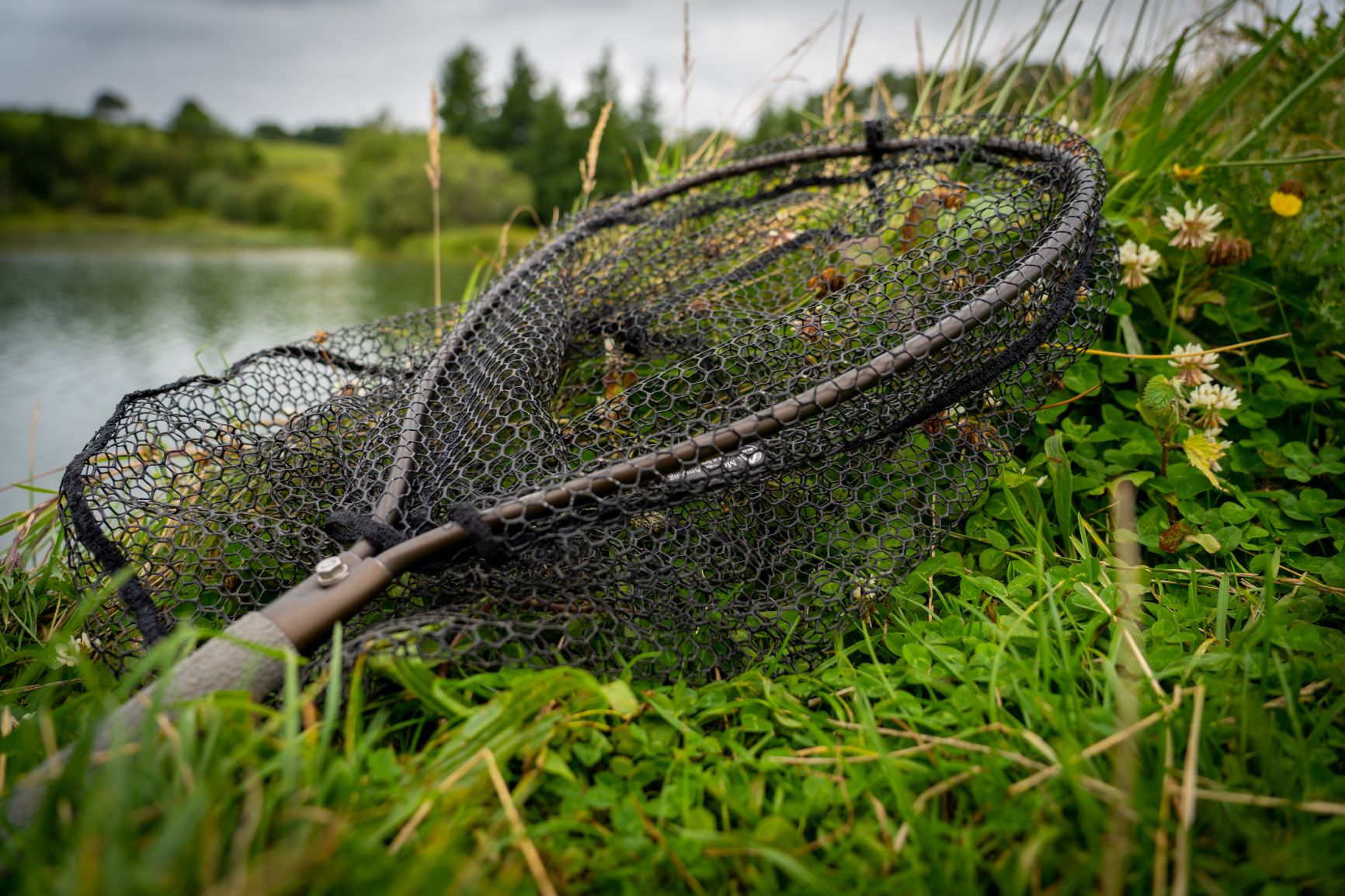
What to look for in a fly fishing net
We stock nets in a variety of shapes and sizes, so you can pick the perfect fly fishing landing net for your needs.
Net Head Shape: Rounded and triangular net heads can be chosen to complement the shape of the fish, thus providing the most support for the fish as you lift it out of the water.
Netting Material: Rubber or latex netting materials tend to be used for fly nets. This is much for ideal for fly fishing to eliminate snagged hooks as well as lowering the change of smelly water residue penetrating the material. Rubber nets are better for fish as they provide less friction, so the fish’s protective slime and delicate scales are safe from damage.
Net handle: We stock nets with a shorter handle that are designed to fit compactly inside a boat, as well as nets with telescopic handles that you can extend to your ideal length. You can also find on our site folding nets that are convenient for those looking for long-handled trout nets but want the save of transportation space.
Brands of Fly Fishing Nets
You can find fly fishing nets from the likes of Wychwood, Daiwa, Sensas, and Greys in our tackle shop. These are all brands we trust on a daily basis in our own angling, so we’re confident that you’ll love them too.
6. Fly Fishing Terminal Tackle
No matter your needs as a fly fishing angler, terminal tackle really is the business end of any angler’s set up as it is the first bit of kit that will come into direct contact with your fish.
View Top 10 Terminal Tackle Items of 2021
Hooks for Fly Fishing
Hooks choice depends on a few things when it comes to fly fishing. The size and type of fly you pick is a big part of your hook selection. Generally, if you are using wet flies, you can use hooks sized between 4-10 but smaller dry flies will require hooks sized between 16-20.
You also have the gape of the hook to consider, which is the distance between the shank of the hook and the point. A hook with a larger gape might be preferable when you’re tackling a larger fish. Many fly anglers opt for the fish-friendly barbless hook as its pretty angler friendly too for those occasions you cast and the hook and fly nip your skin!
Fly anglers must also consider the bend of a hook as this will help imitate a certain insect. For example, a long and gradual bend is going to imitate some of the longer and skinnier bugs.
To assist in strengthening and fly tying a hook for UK conditions, we sell braided loops. These are great for anglers a little hard of seeing and to give that extra strength for those fish that lunge onto your fly.
View our full Beginners Hooks Guide here.
Rigs and Rig Bits for Fly Fishing
Whether you want to craft your own or use a ready-made setup, there are loads of different styles of rig, each with its own benefits and for fly fishing.
If you are using nymphing tactics (placing the flies deeper in the water column), you want either an indicator or euro rig. No matter your style of fly fishing, keep in mind the depth of water when measuring your rig length.
Leaders, Tubing, Swivels, and Links
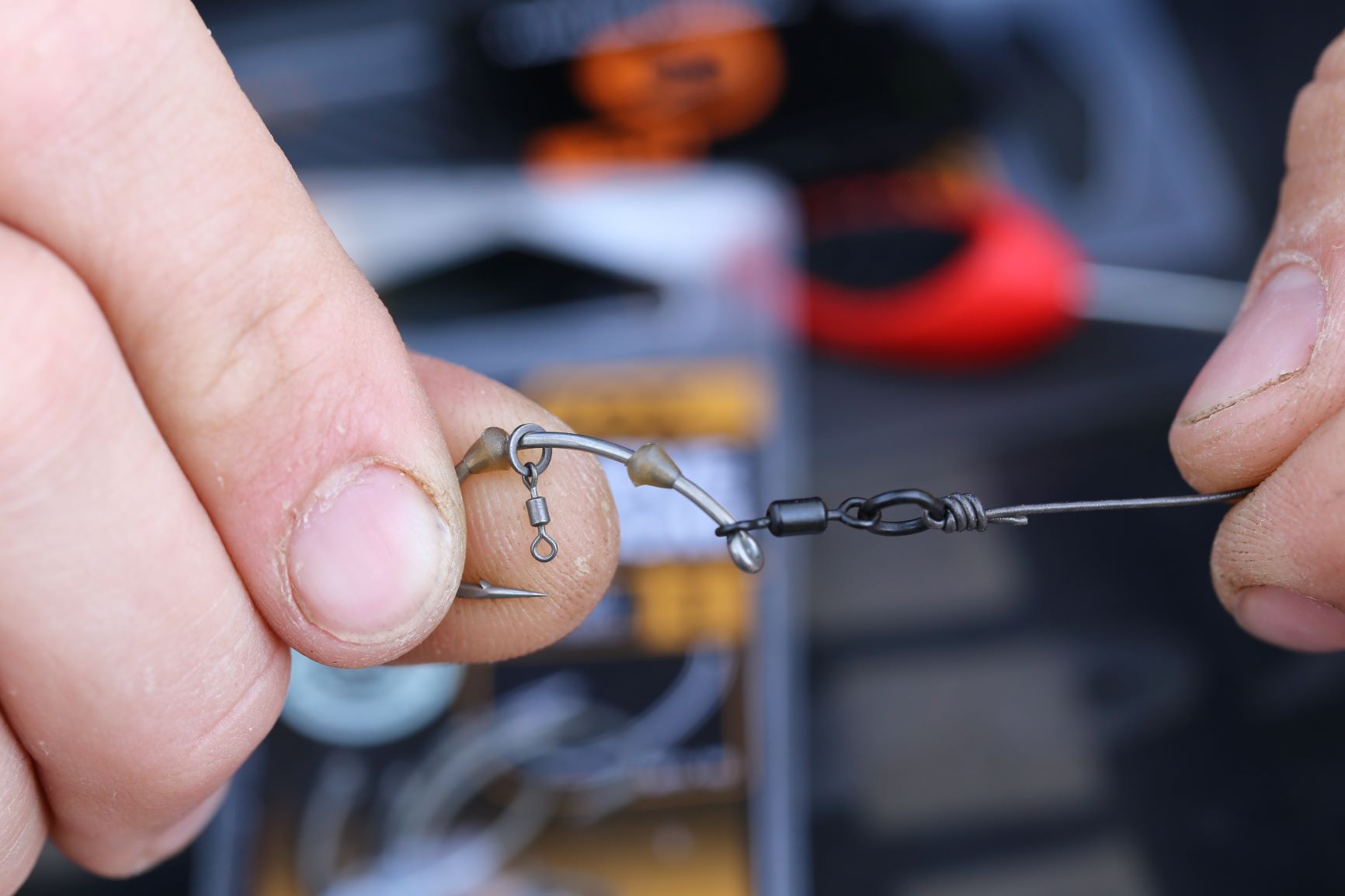
Leaders: These are the more abrasive sections of line that attach your rig section to the rest of your mainline.
Tubing: Essential in preventing your line from damaging the fish and modern tubing technology ensures that you can benefit from a supple and camouflaged edition to your terminal tackle setup.
Swivels & Links: This helps modify your rig to your exacting needs such as independent movement of one section of your rig from the other (swivel) or keeping everything moving together (links).
View all Fly Fishing Terminal Tackle here.
7. Fly Fishing Accessories & Clothing
Oils and Glides: It is good to have some fly fishing reel grease or some silicone oil spray to make that line smoothly leave your reel or to add glide coating to protect your flies from the water and assist with floating techniques when fly fishing.
Waders & Boots: A must for many fly anglers, your waders will help you step into the water and present your fly. See our full waders guide here.
Polaroid Sunglasses: Essential for eye safety – fishing sunglasses stop the fly from entering our eyes on a cast as well as removing the surface glare from the water so you can see and target fish. The shade of lens in your glasses are worth considers and each can assist differently.
Copper / Orange Lenses: |
Ideal “all-rounder” for freshwater venues such as rivers and stillwaters. |
Yellow Lenses: |
Perfect for low light conditions such as late evening sessions on rivers and stillwaters. |
Blue Mirror Lenses: |
Saltwater fly anglers favour this lens as they are great for fishing blue water of the sea. |
Green Mirror Lenses: |
Another lens colour suited for saltwater fishing. |
Fly Fishing Hat: Not only does wearing a hat offer shade and protection to your eyes and head from the sun but it is also a great place to store your retired flies. See our hat guide for more information.
Fly Fishing Vest: Great for holding your gear, a vest keeps it all close by when you need it and is an extra layer to the core of your body for some warmth.
View all Fly Fishing Clothing here.
Fly Fishing Tools: Make sure to pack line nippers, forceps for handling flies, and scissors.
Tackle Box / Flies Storage: Organising your flies and terminal tackle in a protective fly fishing tackle box will keep them in top condition and make finding a particular rig piece, easy.
